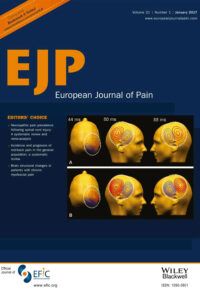Podcast: Play in new window | Download
Welcome back to the Healing Pain Podcast with Louise Sharpe, PhD
Thanks for joining me for this episode. If you’ve been following along with each episode, you know that we often speak about the psychosocial variables that are effective for the management of chronic pain. Why do we spend so much time on this? Study after study confirms that psychological interventions alone are more importantly combined with interventions such as physical therapy are effective for the management of chronic pain. Theories and methods such as Cognitive Behavioral Therapy, Acceptance and Commitment Therapy, Mindfulness-based Stress Reduction, mindfulness explained pain and pain-neuroscience education all have supporting evidence and are a part of a comprehensive program for the management in chronic pain. With many treatments to choose from, a wise clinician may ask, “Which one works best?” Perhaps a better question, “Which components that are embedded in these methods are most effective for the management of chronic pain?” There has been little research to answer these questions or guidance to help the clinician choose the most important components as they’re creating a plan of care for people living with pain.
Joining me to discuss the necessary components of psychological treatment in pain management is Professor Louise Sharpe. She is an expert in health psychology with particular expertise in Cognitive Behavioral treatments for patients with chronic pain and physical illness. She’s particularly interested in the way in which people adjust to illness and the interventions that prevent the development of psychological problems and increase physical disability. On this episode, you’ll learn all about the efficacy of Cognitive Behavioral treatments for the management of chronic pain, the three essential components that should be a part of every Cognitive Behavioral approach and if we should shift our approach away from focusing on components and more toward process-based therapy. There’s a lot to unpack here in this episode with regards to which components are necessary for the treatment of chronic pain. Let’s begin and meet Professor Louise Sharpe.
—
Watch the episode here:
Subscribe: iTunes | Android | RSS
Which Components Of Psychological Therapy Are Necessary For Effective Pain Management With Louise Sharpe, PhD
Louise, thanks for joining me. It’s great to have you here.
It’s great to be here, Joe. Thanks for asking me.
I know you’re on a quarantine like we are here in New York, so I’m glad we can connect here at this time. You’re in Australia and I’m in New York, and sometimes the time difference is a little bit challenging. I came across a paper that you wrote called Necessary Components of Psychological Treatment in Pain Management Programs: A Delphi Study, and it caught my eye. It’s a very detailed, thorough, and interesting study. I wanted to make sure that people can access the paper but then talk to you directly about the paper. Let’s begin here for people who may not know, can you tell us first what your aim for the paper was? Most importantly, tell people what a Delphi study is so they understand what that means in the context of the paper.
The problem that we aimed to address is that we’ve known for a long time over a number of Cochrane reviews, which are generally thought to be the highest possible evidence for treatment that psychological treatments are effective for people with chronic pain. I want to make it clear, that it doesn’t mean that chronic pain is a psychological problem. It’s not, but we provide psychological treatments to people with cancer or multiple sclerosis. We also know that trying to help people learn ways to better manage a chronic physical condition like chronic pain can improve their ability and reduce their disability, which is the primary goal of these programs. The difficulty is that over many reviews, there are over 90 randomized controlled trials of Cognitive Behavior Therapy, which is the most commonly used intervention.
What we found is that the reporting of these trials gets better so people are better at reporting exactly what they did so that we know whether it’s a good quality trial or not. The quality of the therapy has been said not to improve. The difficulty is that psychological treatment or even Cognitive Behavioral Therapy, which is a particular psychological treatment that focuses on people’s beliefs and behaviors. It’s a very large umbrella term. There are lots of different things that might look completely different but still be called a psychological treatment or a cognitive-behavioral treatment. It’s very difficult in trials to know if one is trying to move on from saying, “Are these treatments effective?” to say, “What’s the most effective treatment or what are the most effective components?” You can’t go through and compare all the different variations because there isn’t enough funding to do that.
One way to do that is to try and get a consensus opinion of that from the leading researchers and clinicians, what a good, solid, psychological treatment for chronic pain would involve? What are the core treatments that are necessary in order for that to be a gold standard pain management type approach? That was what we set out to do. When you ask, “What is a Delphi study?” It is a study that goes to a group of experts and it gets them to try and reach a consensus by more than 70% of people agreeing that a particular, in this case, a component of treatment, would be necessary if you were to provide what would be a reasonable standard of treatment for patients with chronic pain.

The way you identified someone as being an expert was when I read your study, it was the fact that they have already conducted a randomized control trial on psychological interventions for the treatment of pain. Most were psychologists but not all. Is that correct?
That’s right. The fact that they were psychologists, we expect it because we were interested in psychological treatments and there had already been a Delphi study about what sorts of professionals, professional skills necessary to manage pain generally. We were trying to narrow in on the psychologists, so that wasn’t surprising to us. The reason that we did that is that a lot of Delphi studies go to people who are known to the authors. They use a process called snowballing, which is I call it a colleague of mine who does work in pain management and say, “Can you suggest other people?” The difficulty with that way is that because I tend to collaborate with people who have very similar views to me, and they tend to collaborate with people that have very similar views to them, then it becomes a little bit like adding bias into that process when you use snowballing because you’re potentially getting people whose work is very similar to your own and amplifying your own view.
We wanted to take a more robust approach to it. What we did is we used people who had been the lead authors of randomized controlled trials, on the basis that we assumed that they had both excellent expertise in reading the evidence because they are researchers, but also because these are randomized controlled trials. These people are typically also clinicians. Those were used in the first round. In the second round, we supplemented that as well with a group of clinicians. We wanted to ensure that we didn’t get like-minded clinicians. We wanted to get a finite group of people where we could go to that were representatives. We wrote to every pain management program in Australia and asked for them to have somebody to complete this. We ended up with 44 experts in our second round.
There are clinicians in there, and it is important to have researchers and clinicians as that expert pool which is great. Did you reach outside of Australia at all?
All the randomized control trials for the researchers we were international. The reason that we went only to Australia for the clinicians is that it was the only way we were able to identify that we were going to get a representative sample that we were going to ask. Their views were not very different at all from the researchers. The main difference was that they thought that more things were necessary if you looked at them separately. I suspect that’s because we chose them from people who worked in large multidisciplinary programs. If you have a large multidisciplinary program, then it’s very easy to include 5, 6, 7 or 8 intervention strategies because these programs are typically run over a three-week period and five days a week. Whereas, we wanted also to be able to say for clinicians who, in Australia, have a limited number of sessions that they can do with patients. If you only have ten sessions, what are the key necessary components that a group of experts would suggest you should be using at this point?
As your paper reads in the first round, you identified 49 different treatment components, which may sound a lot to some people, but those of us who are working at chronic pain are well-aware that people often come to us with lists of interventions they’ve tried. Can you explain to us or define what a component is for people so they understand what that means?
How we identified the components was we went to every randomized control trial that was conducted between 2006 and 2016. We took out everything that people had listed as a particular component in their randomized controlled trials during that period. These could be things like relaxation training, which would be a component of the treatment that can be delivered alone where you teach somebody to do the relaxation training. It could be mindfulness meditation, which again is a component that might aim to achieve some of the same things as relaxation training but has quite a different philosophy.
To some degree, components have to be a little bit arbitrary because people might talk about cognitive challenges, which would be another component of cognitive-behavioral treatment or they might talk about teaching cognitive coping skills. Those would be a little bit different in the way that they’re framed but might have some overlapping features. What we were trying to do in that very first round is to be completely exhaustive of all the things that people said that they did during these programs, and to see what the experts have thought of those strategies. Whether there were ways that we could better amalgamate them or label them in a way that would be more helpful for the final round.
It’s an interesting list to read through as a clinician to see all the different components that people are using in their care of pain.
There were some that we weren’t quite sure what they referred to and neither were some of the experts according to their responses. It’s one of the reasons why it’s important to do this work because there are people doing these strategies, which they are not entirely sure what they’re doing and it isn’t, in my reading of the literature, very much evidence for them. Patients with chronic pain are very much at risk for people doing substandard treatments that are not evidence-based because they’re often very vulnerable. They have tried many things that when you get a good salesman for something that sounds different to what you’ve tried before, it can create a lot of hope in patients where they want to pursue that intervention. Ultimately if it’s not affected, the patients are the ones that end up very disappointed. That compounds their bad experience of treatments through the services.

As a clinician, that is 100% what I appreciated about this paper because I approached pain from an integrative perspective as many professionals do. We have this firestorm that has grown around the biopsychosocial model. However, your work in this paper is clarifying underneath that biopsychosocial model. Let’s look at all those components and let’s identify what works? What’s beneficial? What’s been proven? What shows supportive evidence for it? Within those 49 individual components, you then group them down into seven different approaches. Can you talk a little about the seven approaches? I have them listed out here. I wrote them down because they’re important for everyone to reflect upon.
The team included myself, Michael Nicholas, who’s a leading professor in Clinical Psychology Of Pain Management, Claire Ashton-James, who is also a psychology-trained person, Emma Jones, who’s one of my Ph.D. students and Kathryn Refshauge, who’s one of Australia’s leading physiotherapists involved in pain management and the teaching of pain. We sat down as a team and try to identify what these components had in common to look at general approaches. People would say cognitive challenging or cognitive coping skills. They might say things like attention diversion, which would be an example of a cognitive coping skill. We thought of all of those as being cognitive approaches where what you’re trying to do is change the way in which people are thinking.
Similarly, over the last decade or so, there’s been an increase in approaches such as mindfulness or Acceptance and Commitment Therapy that is often called the Third Wave Therapies of CBT. In essence, they belong to the Cognitive Behavioral Therapy family, but they have a slightly different approach. The approach differs largely because active mindfulness is very much more focused on the process of how people approach their thoughts and experiences rather than the content. In the cognitive approaches, typically what we’d be trying to do is get people to change their beliefs. If people believed that pain was likely to harm them, we would try to challenge that in some way by developing behavioral experiments for them or by presenting evidence and working through the evidence with the person with chronic pain.
However, if you were doing ACT, you would get them to think that’s a thought. It may or may not be true and you would want them to not respond to it and mindfulness has a similar approach. We grouped those into similar things or increasing activities. In the results, we found that was a very important one that we need to get people doing things. We tried to do that so we could put together a group of interventions that have a similar aim to see which of the broad categories of interventions or approaches did people think were necessary. Within that particular strategy that was important or was it the case that it didn’t matter, which strategy within that approach you used as long as you did something within that approach.
Everyone knows those 49 interval treatment components grouped into seven approaches were exercise-related approaches, psychoeducation, social, cognitive, pain education, mindfulness, or ACT, and then there was the seventh group which was the other. Even though seven right there are very helpful for people when they look at a multidisciplinary pain program that many of us have worked in or are working in. I recommend that everyone read the paper, Necessarily Components of Psychological Treatment in The Management of Pain. There’s a lot of great information here. We’ve spoken about some of it already in this episode. Louise, what is this all boiled down to? At the end of the day, what is the data from your study tell us?
The data from the study says that if you’re going to see somebody with chronic pain, there are three things that you need to do. Firstly, you need to provide them with some education, particularly education about pain and the role of thoughts and behaviors in the experience of chronic pain. Secondly, you need to do some cognitive work. You need to work with them to try and change some of their beliefs around pain. The experts didn’t seem to think it mattered what strategies you used in order to achieve that as long as you targeted that, and you need to get people moving. You need to increase their activity. As strategies like goal-setting and pacing come under those areas, and those are important to make sure that people start to be able to do things.
They are likely that those three things are important because they go together. If you don’t educate people about pain, they’re going to be very reluctant to do things because they worry that the pain is a sign that they have been harmed in some way or that their body is damaged. Once they understand that chronic pain is nearly mediated and that the pain is because those nerves are sending signals for damage which is no longer there, that allows them to start to engage in an activity. As they engage in activity in whatever way they do that through the prescription of exercises, physiotherapy, goal setting, values-clarification type of work through Acceptance and Commitment Therapy, they stop as well to challenge their beliefs. We need to bring some cognitive strategies that help them to do that more so so that we try and make those strategies work together. Those were the three components that the experts felt were core and necessary to provide an appropriate and evidence-based psychological treatment approach for patients with chronic pain.

To provide some education, help people to move in daily activity, help them with their thoughts, and how their thoughts relate to their actions or their behaviors with regards to pain. From what you found from your study, it doesn’t matter whether pain education is done through explained pain or traditional more psychoeducation. The cognitive aspect doesn’t matter whether it’s traditional Cognitive Behavioral Therapy, ACT, or mindfulness-based stress reduction.
The experts did suggest that it was important to challenge the content of the beliefs, which would suggest a more Cognitive Behavioral approach. It’s fair to say that one of the limitations is because this study took a while to do and we identified all these going back to 2016. It is true that those are more approaches and it may be with subsequent research, those results would change. One of the things that’s important in a sense ACT and mindfulness are the new kids on the block, it’s certainly true that now there is evidence to support their use. There is still more evidence to support the use of traditional Cognitive Behavioral Therapy. What we need are well-conducted trials that look at who benefits most from one or the other. It’s very likely that there will be different approaches that will be more effective for one person or another. For example, in the area of chronic pain, there is one study that looked at that, which is an old study now by Zaltrap in 2008, where they compared mindfulness and Cognitive Behavior Therapy. What they found was that on a range of different outcomes, Cognitive Behavior Therapy was better than mindfulness. That was a significant effect on a number of outcomes.
However, there was a subgroup of patients for whom mindfulness outperformed CBT. That subgroup of patients were people who had a history of recurrent depression. That’s an important finding because that’s what we find in the psychiatric literature as well that mindfulness has a particular role in preventing relapse from people who have a recurrent history of depression. I expect in the next ten years if you want to ask me back that I’ll be able to tell you that there are certain patients for whom mindfulness is better than CBT and vice versa. At the moment, what we need to know is what is the strongest evidence base. Aside from trying to do the trials that compare things head-to-head for which there are in the range of difficulties that are discussed in the paper, an expert consensus is at least one way to get some information about that.
Thank you for that clarification. That’s helpful. It also starts to point us in the direction that some people do better with cognitive restructuring. Some people do better with cognitive fusion but as a practitioner, you may need both sets of skills.
What we would say on the basis of this study is that the experts did think that ACT and mindfulness of diffusion, as you talked about is a component of ACT are effective. The experts agreed that. That’s my reading of the evidence but they felt that they weren’t necessary at this point. They thought they were desirable. What I would say is that this is good news for pain patients because what it’s saying is that the experts think that the three things that we discussed before cognitive approaches, increasing activity, and psychoeducation are the core key psychological treatments. If people have additional time, there are lots of desirable things of which cognitive diffusion would be one and where patients aren’t benefiting or have failed to benefit in the past from those sorts of approaches, cognitive approaches, for example then ACT and mindfulness are very appropriate alternatives for which there is now developing evidence.
Lifestyle did come up in your paper somewhere in the writing. I noticed it faded away a little bit. I’m wondering if it wasn’t looked into as good as it could have been or is lifestyle wrapped up, let’s say in a fourteen-week Cognitive Behavioral Therapy approach to pain where a longer Cognitive Behavioral Therapy in a multidisciplinary setting may have a dietician working there? It may have someone who focuses on sleep.
If we look at the trials that have the largest effect size, there’s no doubt that you’re right. Those sorts of multidisciplinary teams that work with dieticians, OTs, physiotherapists, clinical psychologists and anesthetists provide the largest gains in the shortest possible amount of time. They do spend a lot of time like it’s an extremely intensive program but they get very good results. The difficulty is that in Australia, we know that the very small minority of all chronic pain patients get access to that gold standard of treatment. In Australia or in any case, we are limited to having ten sessions with a patient a year in private practice. I’m sure in your insurance companies, you have limitations as well. The difficulty is that the experts felt that we shouldn’t be prioritizing diet advice in the treatment of chronic pain because that does not core to psychological management.
The other thing that’s important to say is we often assume if you have ten sessions, then you could do lots of things. One of the randomized control trials that I completed was published in 2012 where we tried to dismantle CBT and we looked at cognitive components and behavioral components, plus the combined. There was no evidence that the combined group was better overall than either of the other two in any else’s, so we have seven outcomes. In fact, it was the cognitive approach on three of the seven outcomes that were superior to one or other of the alternative treatments. From that, one of the things we do know is that simply doing more things doesn’t bring about more change necessarily. Sometimes, it’s better to do the core things well in order to facilitate change.

There has been some feedback about your study with regard to components. We talked about components, which I enjoyed reading about. There is a trend toward what’s called process-based therapy. Lance McCracken, who is a psychologist and a pain researcher made some comments about your paper. Can you first explain to us the difference between components versus processes? He recommends that we should spend a little bit less time on components as we move forward and more time on the process.
A lot of the comments that are made are useful ones. Lance’s practice base is largely ACT. He’s an Acceptance and Commitment Therapy practitioner largely in his orientation and in the groups that he ran at St. Thomas’. They very much took on an ACT approach. He’s right. When you have a patient in front of you, you should be looking at what are the processes, what are the core features for that patient of how they come to be as disabled by their pain as they are and what processes that you might be able to change in order to ameliorate that the best that you can. The difficulty is a few folds, one is that it’s very difficult to communicate what area those processes should be in.
He’s right about the components and to some degree, that was our results for cognitive approaches. It doesn’t matter how you get there as long as you get cognitive processes to shift. Some of our results are consistent with what he’s saying. It’s true that we need individual tailoring for interventions when we work with individual people, but I also think that we need to know what are the general approaches that we should be doing. We should be questioning our own practice if we’re not doing 80% of what people were suggesting were the right things to be doing. If we’re routinely doing something different, then that’s a good time for us to be reflecting on why we’re doing that.
It may be that we’re ahead of the curve or we’re doing something that’s even better. That also may not be the case. Processes are important. Partly what we’re talking about that there are different words. I would say our approaches, you could have called processes. He’s right about the specific components that in many cases doesn’t matter what the specific component is and it may be about doing the component that works for the patient. I would say that pain education is a component that we should all be doing with our patients.
To some degree, what he’s saying is correct. I would also say that my experience of having worked and run multidisciplinary chronic pain programs is that groups for this intervention are extraordinarily effective. There are a lot of other components of the group that increase the efficacy of the strategies that you’re using. You need to know what components you’re doing in that group. It’s difficult in a group of 10 or 12 patients to be individually tailoring what you do in that group. You can tailor the strategies for sure but I’m not sure if you can tailor the content of the program each time you get a new group of ten people.

Even as we start to move into groups and explore groups, things like peer-led groups are starting to pop up and that leads a whole new dynamic to groups that might be difficult to tailor as well. Who should pay attention to this work? I have a couple of people in mind. As I read your research, I’m like, “This could be useful for a certain group.” I’m curious to hear what you say before I share my thoughts and opinion.
There are some key groups that could. Firstly, for researchers. I pick up a randomized control trial of Cognitive Behavior Therapy and I read what they’ve done. I’m not surprised that they didn’t get very strong effects because they clearly did not do the things that I would have chosen to have done. Researchers who are wanting to investigate the efficacy of CBT in whatever way or pain management generally need to look at this and say, “I want to see if my new kid on the block is better than what’s around now. These are the minimal things that I should be including.” That’s important for researchers. The people running multidisciplinary programs and clinical psychologists are working in those settings that these are the core things that they need to make sure that they do have in the program even if they have other things as well.
For the non-specialist, it’s important. One of the things that I find difficult in Australia and a problem in the States as well is that in Australia, most psychological therapy happens in the private practice office with a person who has not had very much specific training in pain at all. A patient will come through the door and they don’t know how to tailor their approach to pain. They might concentrate on trying to work with the depression somebody has because they have pain or the anxiety that they have about their pain. There is a specific way of doing psychological treatment with people with pain that has evidence for it and it is not treating the depression solely. For that group of people, this is a very helpful paper.
When you mentioned the people who are non-specialists and as I’m reading your paper, I was thinking students. We have therapists, psychologists, physical therapists, OTs who are graduating with eight years plus of education and their brains are full of all these different treatment strategies, interventions. Your paper boils it down to, “Here are the three components that are important whether you work this into a single treatment session or it’s spread out over twelve visits. Here’s what to focus on that’s proven to help people.” I appreciate that. It’s been great chatting with you. I love this research paper. I’m going to share it in this show and I’ll share it on social media so people can read all the information. If people want to follow your work and learn more information about you, where can they find you?
I work at the University of Sydney. I have a webpage there. If you type in Louise Sharpe Sydney, you’ll come to that and see my publications. I’m also on Twitter and I’m @LSharpeUSYD. I’m happy to meet people on Twitter and talk more about this important area because chronic pain is an area that is often neglected, yet we know that 1 in 5 people experience chronic pain.

I want to thank Louise for joining us to discuss the necessary components of psychological treatment in pain management. Make sure you check out the paper and share this episode with your friends and family on all your favorite social media outlets. It’s been a pleasure and I’ll see you next time.
Thanks so much for your time. It’s been a pleasure, Joe.
Important Links:
- Louise Sharpe
- Necessary Components of Psychological Treatment in Pain Management Programs: A Delphi Study
- Michael Nicholas
- Claire Ashton-James
- Kathryn Refshauge
- Lance McCracken
- @LSharpeUSYD – Twitter
- https://OnlineLibrary.wiley.com/doi/epdf/10.1002/ejp.1561
About Louise Sharpe
 Professor Sharpe is an expert in Health Psychology with particular expertise in cognitive-behavioral treatments for patients coping with chronic physical illness. She is interested in developing treatment programs for novel indications in a range of health conditions and testing their efficacy in randomized controlled trials. Louise is particularly interested in the way in which people adjust to illness and in interventions that prevent the development of psychological problems and/or increased physical disability. Much of her research has focused on chronic pain, but she has recently been investigating fear of cancer recurrence and anxiety and depression in epilepsy. She is particularly interested in the role of cognitive processes in adjustment.
Professor Sharpe is an expert in Health Psychology with particular expertise in cognitive-behavioral treatments for patients coping with chronic physical illness. She is interested in developing treatment programs for novel indications in a range of health conditions and testing their efficacy in randomized controlled trials. Louise is particularly interested in the way in which people adjust to illness and in interventions that prevent the development of psychological problems and/or increased physical disability. Much of her research has focused on chronic pain, but she has recently been investigating fear of cancer recurrence and anxiety and depression in epilepsy. She is particularly interested in the role of cognitive processes in adjustment.
Love the show? Subscribe, rate, review, and share!
Join the Healing Pain Podcast Community today:
